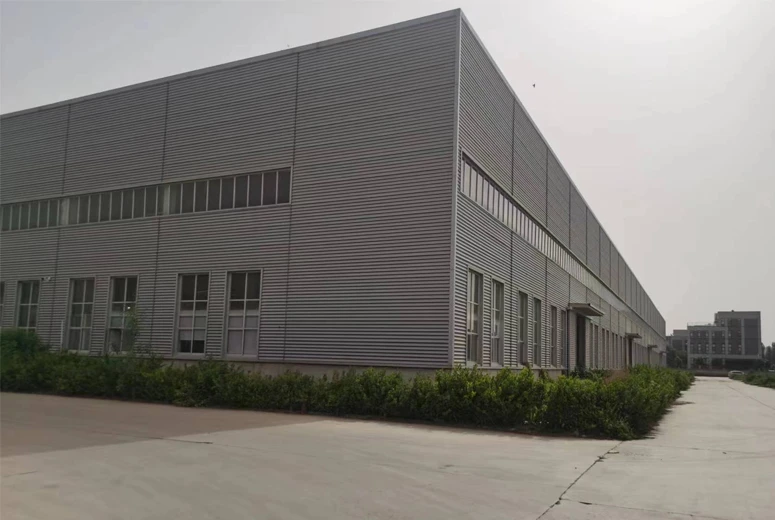Steel Tube Alignment Equipment for Precision Shaping and Straightening Solutions
Understanding Steel Tube Straightening Machines
Steel tube straightening machines play a crucial role in the manufacturing and processing of steel tubes, which are widely used in various industries, including construction, automotive, aerospace, and manufacturing. The demand for precision and quality in these industries necessitates the use of sophisticated equipment designed to ensure that steel tubes are straight, uniform, and meet specific tolerances. This article will discuss the importance, working principles, and types of steel tube straightening machines.
Importance of Straightening Steel Tubes
Steel tubes, during their manufacturing process, can often become bent, warped, or misaligned due to various factors such as stress during cooling, improper handling, or production errors. Any deformation in steel tubes can lead to significant challenges in their application. For instance, in construction and engineering, bent tubes may compromise structural integrity, while in automotive manufacturing, irregularly shaped tubes can disrupt assembly and functionality. Therefore, it is essential to ensure that steel tubes are straightened to precise dimensions, enhancing their usability and safety in their intended applications.
Working Principles of Straightening Machines
Steel tube straightening machines operate on a relatively straightforward principle. They apply mechanical force to the bent tube, progressively correcting its shape until it achieves the desired straightness. This process typically involves several stages
1. Feeding The steel tube is fed into the machine, aligned with the straightening rollers or dies. 2. Pre-straightening Initial adjustments may be made to align the tube properly before the main straightening occurs. 3. Straightening The machine uses a series of rollers positioned strategically along the length of the tube. These rollers exert precise pressure at various points, carefully rotating the tube and gradually straightening it. The design of the rollers can vary, enabling the machine to work with different tube sizes and materials. 4. Quality Control After straightening, the tube is often measured for straightness using laser measurements or mechanical gauges, ensuring it meets the required specifications.
Types of Steel Tube Straightening Machines
steel tube straightening machine

There are multiple types of steel tube straightening machines, each suited to specific requirements and production environments
1. Manual Straightening Machines These are relatively simple machines that require operators to adjust and feed the tubes manually. While less expensive, they are typically used for smaller operations with lower volume demands.
2. Semi-Automatic Straightening Machines These machines offer a blend of manual and automated features. They require some operator intervention but significantly reduce the need for continuous manual adjustments, enhancing efficiency.
3. Fully Automatic Straightening Machines Ideal for high-volume production environments, these machines integrate advanced technologies for automatic feeding, straightening, and quality control. They are equipped with various sensors and controls that allow for precise and quick adjustments based on real-time measurements.
4. Hydraulic and Mechanical Straightening Machines Some machines use hydraulic systems to apply force, while others rely on mechanical arrangements of rollers and levers. The choice between the two often depends on the specific requirements of the production process.
Conclusion
Steel tube straightening machines are essential tools in the steel processing industry, ensuring that tubes meet the stringent requirements for various applications. With advancements in technology, these machines have become more efficient, faster, and capable of producing high-quality results. Manufacturers seeking to optimize their production processes must consider investing in quality straightening machines to maintain their competitive edge and meet consumer demands for precision-engineered products. As industries continue to evolve, the role of straightening machines will remain pivotal in ensuring the reliability and performance of steel tubes across various applications.
-
High Frequency Straight Seam Welded Pipe Production Line-BzZhou Xinghua Machinery Equipment Manufacturing Co., LTD.|line pipe steel&welded gas pipeNewsJul.30,2025
-
High Frequency Straight Seam Welded Pipe Production Line-BzZhou Xinghua Machinery Equipment Manufacturing Co., LTD.|High Precision&Automated SolutionsNewsJul.30,2025
-
High Frequency Straight Seam Welded Pipe Production Line - BzZhou Xinghua Machinery Equipment Manufacturing Co., Ltd.NewsJul.30,2025
-
High Frequency Straight Seam Welded Pipe Production Line-BzZhou Xinghua Machinery Equipment Manufacturing Co., LTD.|Precision Welding, High EfficiencyNewsJul.30,2025
-
High Frequency Straight Seam Welded Pipe Production Line|BzZhou Xinghua|Precision Welding&EfficiencyNewsJul.30,2025
-
High Frequency Straight Seam Welded Pipe Production Line - BzZhou Xinghua|Precision Engineering&EfficiencyNewsJul.30,2025


